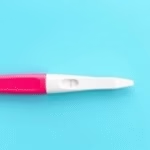Understanding Implantation Bleeding 13 DPO
The term “implantation bleeding” refers to light spotting that can occur when a fertilized egg attaches itself to the lining of the uterus. This process usually takes place around 6 to 12 days after conception. When we mention “13 DPO,” we are referring to 13 days past ovulation, which is the time when a woman may start to notice symptoms indicative of early pregnancy. The spotting can often be mistaken for a light period, but there are distinct differences. Implantation bleeding typically lasts for a shorter time and is lighter in color, often ranging from pink to brown.
For many women, 13 DPO is a critical marker in their menstrual cycle for determining pregnancy. At this point, estrogen and progesterone levels fluctuate, influencing various physical symptoms. Recognizing whether the bleeding is linked to menstruation or implantation can be instrumental in early pregnancy detection. Understanding implantation bleeding and its timing can help women better anticipate pregnancy and manage their expectations around their cycles.
Symptoms of Implantation Bleeding
Recognizing the symptoms of implantation bleeding is essential for women trying to conceive. Unlike a typical menstrual period, implantation bleeding is usually lighter and shorter.
Common symptoms include:
- ⦁ Light spotting, which can appear pink or brown.
- ⦁ Mild cramping that may accompany the spotting.
- ⦁ No soaking of pads or tampons, as the flow is minimal.
- ⦁ Occurrence a few days before an expected menstrual period.
It’s important to note that while these symptoms can indicate implantation bleeding, they may not fit all women equally. Some women may experience no symptoms at all. Observing the timing and characteristics of the bleeding can offer critical clues in distinguishing this event from menstruation.
What to Expect at 13 DPO
When reaching 13 DPO, many women will take a home pregnancy test to ascertain if they are pregnant. The hormonal changes occurring at this point can provide vital information.
Here’s what to expect at this stage:
- ⦁ Positive home pregnancy tests if implantation has occurred.
- ⦁ Menstrual symptoms that may confuse some women.
- ⦁ Changes in the breasts, such as tenderness.
- ⦁ Increased fatigue and frequent urination.
It’s essential for women to be aware of these symptoms. Recognizing them can help in distinguishing between typical PMS changes versus early pregnancy signs. Furthermore, different pregnancy tests have varying sensitivities, meaning that testing too early might yield false negatives. A test taken after the day of expected menstruation will often provide more accurate results.
When to Consult a Healthcare Provider
Many women wonder when it is appropriate to consult a healthcare professional regarding implantation bleeding or concerns about their pregnancy status. Here are some circumstances that may warrant a visit:
- ⦁ Heavy bleeding that resembles a period.
- ⦁ Severe cramping or pain.
- ⦁ If the bleeding lasts longer than a few hours.
- ⦁ Uncertainty regarding the pregnancy test results.
It’s crucial to prioritize health and well-being. Seeking medical advice can provide peace of mind and ensure any complications are addressed early on. If pregnancy occurs, early prenatal care becomes vital for the health of both the mother and the growing fetus, making this consultation even more important.
Impact of Timing on Implantation Bleeding
The timing of implantation bleeding can vary and can significantly influence the experience of women. Understanding this timing is essential for women trying to conceive. It can impact everything from anxiety levels related to testing to detecting early symptoms.
Key points regarding timing include:
- ⦁ Typically occurs 6 to 12 days after ovulation.
- ⦁ At 13 DPO, many pregnancy tests can provide accurate results.
- ⦁ The timing can differ among women based on individual cycles.
- ⦁ Variability can lead to confusion, causing women to misinterpret their bodies’ signals.
Understanding these dynamics can help women navigate their reproductive health effectively. It is worthy to note that just because some women have a light period at 13 DPO does not automatically mean they are not pregnant; rather, it might imply an irregular cycle or recent conception.
Common Myths About Implantation Bleeding
There are several myths surrounding implantation bleeding that can cause unnecessary stress and confusion. Disentangling fact from fiction can improve understanding and readiness in anticipation of pregnancy.
Some common myths include:
- ⦁ Myth: Implantation bleeding is the same as a period.
- ⦁ Myth: All women experience implantation bleeding.
- ⦁ Myth: You can’t get pregnant if you have implantation bleeding.
Addressing these myths provides clarity and accurate knowledge. Becoming informed about the reality surrounding implantation can aid in better decision-making regarding reproductive health and family planning.
Possible Causes of Irregular Bleeding at 13 DPO
There are various reasons women may experience irregular bleeding around 13 DPO. Understanding these reasons can be important for health management and when consulting with healthcare providers.
Some possible causes include:
- ⦁ Hormonal fluctuations that can disrupt regular patterns.
- ⦁ Stress affecting menstrual cycles.
- ⦁ Uterine fibroids or polyps.
- ⦁ Ectopic pregnancy.
Recognizing that irregular bleeding can stem from factors beyond typical hormonal changes is crucial for women. It can encourage women to seek medical advice sooner if they are experiencing unexpected symptoms. Consulting with a healthcare professional is essential to determine the underlying cause and get appropriate care.
What Women Should Know About Pregnancy Tests
When trying to determine if they are pregnant, understanding how pregnancy tests work is vital. Tests are based on detecting the level of human chorionic gonadotropin (hCG) in the body, which increases rapidly after implantation.
Key considerations regarding pregnancy tests include:
- ⦁ Timing is essential for accuracy.
- ⦁ Test sensitivity varies among brands.
- ⦁ Following instructions is crucial for correct results.
- ⦁ If negative, consider retesting in a few days if bleeding occurs.
Awareness of these factors can help mitigate frustration and confusion when trying to assess pregnancy status. Women should also remain mindful of the possibility of false negatives, leading to misunderstanding surrounding their bodily responses.
Final Thoughts
Understanding implantation bleeding at 13 DPO can significantly affect women trying to conceive. Early detection of pregnancy through symptoms and understanding timing is crucial for managing expectations and related emotions. While light spotting may be concerning, recognizing it as a potential sign of pregnancy can provide encouragement and hope.
It is also important to keep in mind the distinct difference between implantation bleeding and normal menstruation. Symptoms like mild cramping or light spotting can help differentiate the two. Consulting with a healthcare provider regarding any concerns or questions is beneficial and can provide proper guidance throughout the process.
Many women experience a mix of emotions related to pregnancy testing and potential outcomes. Whether hopeful for a positive result or trying to understand the signs of early pregnancy, knowledge can empower women to make informed choices. Staying educated about myths and knowing what signs to watch for can aid women in getting the care they need without unnecessary anxiety.
Frequently Asked Questions
1. What is implantation bleeding?
Implantation bleeding is light spotting that occurs when a fertilized egg attaches to the uterine lining, generally happening around 6 to 12 days after ovulation.
2. How long does implantation bleeding last?
Implantation bleeding typically lasts for a few hours to a couple of days, but never as long as a normal period.
3. Can all women experience implantation bleeding?
Not all women experience implantation bleeding, and it varies from person to person.
4. What color is implantation bleeding?
Implantation bleeding usually appears light pink or brown, in contrast to the bright red of menstrual bleeding.
5. Should I be concerned if I experience heavy bleeding at 13 DPO?
Yes, heavy bleeding that resembles a period at 13 DPO can indicate a complication or other health issue, and it’s advisable to consult a healthcare provider.
Further Reading
What Type of Psychotherapy Is Best for Anxiety?







